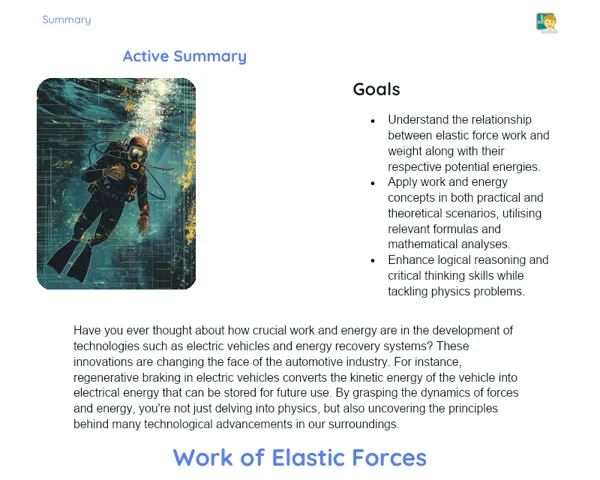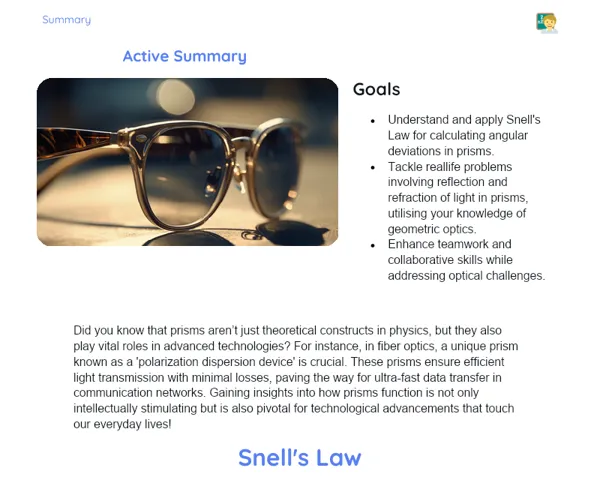Socioemotional Summary Conclusion
Goals
1. 🔍 Grasp the concept of latent heat and its significance in the phase changes of matter.
2. 📊 Learn to calculate the heat required to change a substance's state using the latent heat formula.
3. 🧠 Build socio-emotional skills like resilience and self-control while tackling challenges and solving intricate problems.
Contextualization
Have you ever considered how ice melts in a cool drink or how water boils away to steam? These are practical examples of latent heat, an intriguing concept that explains how substances shift their states without changing temperature! 🌡️✨ Understanding this is not just vital for Physics but also dispels some of the wonders of the world we see around us. Ready to embark on this exciting learning adventure? 🚀
Exercising Your Knowledge
Latent Heat Concept
Latent heat refers to the amount of heat needed for a substance to change its physical state without any change in temperature. This concept is key to understanding how energy functions during different phase transitions, like melting, vaporization, and solidification.
-
Latent Heat of Fusion: This is the heat required to convert a substance from solid to liquid, like turning ice into water.
-
Latent Heat of Vaporization: This is the heat needed to convert a substance from liquid to gas, as in the evaporation of water.
-
Importance in Nature: Latent heat is instrumental in natural processes, such as cloud formation and climate stability.
-
Practical Applications: Grasping latent heat is essential in fields like engineering, meteorology, and cooking, facilitating the design of efficient heating and cooling systems.
Latent Heat Formula
The formula for latent heat is Q = m * L, where Q is the amount of heat, m is the mass of the substance, and L is the specific latent heat. This formula is vital for calculating heat in phase change processes and is a crucial tool for solving real-world physics problems.
-
Q = m * L: This format represents the core of the formula, where Q indicates heat in joules (J), m is the mass in kilograms (kg) or grams (g), and L denotes latent heat in J/kg or cal/g.
-
Specific Latent Heat: The values for L vary between substances and phase transitions, making it essential to know these for proper application.
-
Problem Solving: Applying this formula practically helps answer questions like how much heat is needed to melt ice in a drink or the energy required to boil water for cooking.
-
Academic and Personal Context: Besides aiding academic exercises, understanding this formula can improve everyday life, like perfecting recipes or making the most of home appliances.
Phase Change
Phase change refers to the transition of a substance from one physical state to another, such as from solid to liquid or liquid to gas. Each transition involves a specific amount of heat absorption or release without changing the substance's temperature.
-
Melting: The transformation from solid to liquid, like the melting of ice.
-
Solidification: The transition from liquid to solid, like how water freezes into ice.
-
Vaporization: The change from liquid to gas, such as water evaporating upon heating.
-
Condensation: The reverse process, where gas becomes liquid, like water vapour condensing into rain.
-
Sublimation and Deposition: Direct changes from solid to gas and vice versa, without liquid phase, like dry ice turning to gas.
Key Terms
-
Latent Heat: The amount of heat needed to change a substance's state without altering its temperature.
-
Latent Heat of Fusion: The heat required to convert a solid into a liquid.
-
Latent Heat of Vaporization: The heat needed to turn a liquid into a gas.
-
Phase Change: The process by which a substance shifts from one state to another, involving latent heat.
-
Q = m * L: The formula for determining the heat involved in phase transitions.
For Reflection
-
How do you cope with frustration and stress when dealing with complex physics problems like latent heat calculations? What methods can you use to manage these emotions?
-
In what practical scenarios can you apply your understanding of latent heat, be it in cooking or operating household appliances? Consider some everyday examples.
-
What socio-emotional skills do you feel you can enhance by collaborating with peers on latent heat problems? How can effective teamwork and communication support your learning and emotional management?
Important Conclusions
-
🌡️ We have come to understand that latent heat is the heat necessary to change a substance's state without altering its temperature – a crucial aspect of thermology.
-
🔍 We have learned to use the formula Q = m * L to determine the heat involved in processes like melting and boiling.
-
🧠 We have explored how our emotions, such as frustration or satisfaction, affect our learning process and how we can foster resilience and self-control when facing scientific challenges.
Impacts on Society
Understanding latent heat profoundly influences various aspects of our daily life and community. For instance, while cooking, knowing why ice melts or water boils can enhance resource usage and improve recipe results. Additionally, in an industrial setting, this knowledge is vital for engineering heating and cooling systems that preserve food, medicine, and promote energy efficiency.
Emotionally, navigating complex questions related to calorimetry can be demanding but also exceedingly fulfilling. By honing socio-emotional skills in this process, we not only boost academic performance but also enhance our ability to tackle everyday challenges. Recognizing and handling emotions like anxiety and frustration while resolving scientific queries fosters significant personal growth and equips students to face future adversities.
Dealing with Emotions
To assist you in managing your feelings while exploring latent heat and its applications, I suggest an exercise using the RULER method. Take a quiet moment to reflect on a challenge you encountered while studying this topic. Acknowledge the emotions you felt, such as frustration or anxiety, and try to pinpoint their sources. Name these emotions accurately and jot them down in a journal. Share your experiences with a friend or family member to express how you felt. Finally, devise strategies to manage these feelings going forward, like practicing deep breathing or taking short breaks during study sessions. This will nurture self-awareness and self-control, essential skills for both academic and personal success.
Study Tips
-
📚 Maintain comprehensive notes: While studying concepts related to latent heat and tackling problems, jot down detailed notes. This will support effective revision and strengthen your understanding.
-
🔄 Practice problem-solving regularly: Regularly engage in solving latent heat problems. This not only solidifies your understanding but also sharpens your ability to apply theoretical knowledge.
-
🤝 Form study groups: Collaborate with your classmates to discuss and solve calorimetry-related problems. Teamwork can provide fresh perspectives and ease the grasp of complex ideas.



